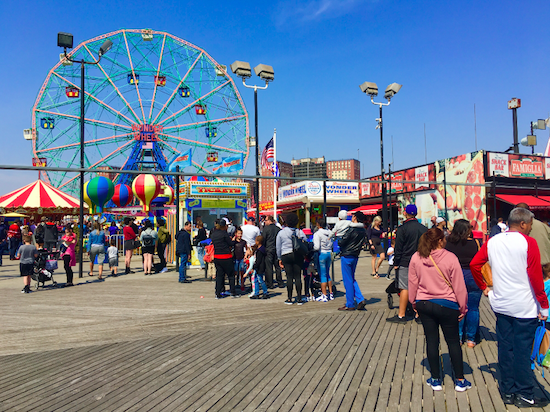The Coney Island Boardwalk could still become a concrete sidewalk, preservationists warn
Even landmarking the historic structure won't guarantee wood planks forever

Even being named a city landmark won’t save the Coney Island Boardwalk from becoming a sidewalk, preservationists warned Tuesday.
That’s because the Landmarks Preservation Commission won’t have the power to stop the Parks Department from replacing the fabled city-owned walkway’s wood planks with cement slabs or plastic “timber” even if the structure is designated as a scenic landmark. The city Public Design Commission would retain authority over alterations — and fans of the wood boardwalk said the Landmarks agency should get tough and insist it has the right to protect the two miles of wood planks that remain on the 2.7-mile ocean-front attraction.
“This is not a time for inter-agency courtesy,” Christabel Gough of the Society for the Architecture of the City testified at a hearing at the agency’s Lower Manhattan headquarters on Tuesday morning. “Everyone … wants it protected from regrettable, wrongful decisions by the Department of Parks. We want the boardwalk to be a boardwalk, not a cement road, not a plastic promenade, a real boardwalk made of real boards of wood, just as it always was, and should be.”

Coney Island
View MoreIn just a little over an hour, you can be transported from the glitz and glamor of Manhattan to the old-school amusement of Brooklyn's storied Coney Island. The destination offers thrills, sun, surf and a unique brand of entertainment that will feel worlds away from the rest of the City.